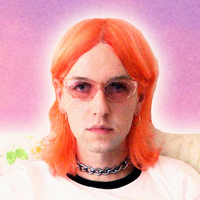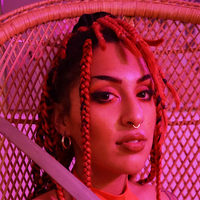On letting something end to begin something new
Prelude
Humberto Leon is an American fashion designer, retailer, and creative director. Leon is best known, along with partner Carol Lim, for founding the fashion brand and retailer Opening Ceremony in 2002 in Lower Manhattan. Other stores followed in New York City, Los Angeles, and Tokyo. An Opening Ceremony store opened in 2012 in London, coinciding with the Olympics. In 2011, Lim and Leon were announced as creative directors of the French high fashion brand KENZO, founded in 1970 and is part of the LVMH luxury goods conglomerate until their departure in July 2019. In early 2020 it was announced that Opening Ceremony would be closing their retail stores, though the brand itself would continue. In November of 2020, Leon collaborated with his mother, sister, and brother-in-law to open Chifa, a Peruvian-Chinese restaurant in Los Angeles.
Conversation
On letting something end to begin something new
Designer and entrepreneur Humberto Leon discusses collaboration as a creative engine, following your feelings, and not being afraid to break the rules.
As told to T. Cole Rachel, 2853 words.
Tags: Design, Fashion, Food, Collaboration, Beginnings, Success, Multi-tasking, Day jobs.
Most people know you through your work with Opening Ceremony and, later on, the work you and Carol did with Kenzo, but you had a pretty fascinating intro to the fashion business way before then. Can you talk me through the beginnings of your creative and professional career?
Sure. So I went to UC Berkeley and studied art. I graduated in art practice and American studies. I graduated in 1997. I started working at the Gap when I was 14 in the ’90s, and it was a big deal for a 14-year-old to be working there. I got offered this job because I was really willing to do all these other things that weren’t just about selling. So my manager was like, “Hey, do you want to start doing the windows for our store?” And I said, “Yeah.” I was also redoing the floor setups and things like that. So I started doing all that stuff. By the time I was 15 and a half, they gave me a position to be the district digital coordinator, whatever that means.
I started to travel around to different stores and doing all their windows. I graduated from high school, and I was still doing this. When I got accepted to UC Berkeley, and I decided to quit just to really focus on the school. I get there, and my manager had given the Berkeley Gap manager my phone number. They called my mom, and then my mom called me and gave me their number. I was like, “Oh, no, my past is following me.” But I talked to them and ended up working full-time for Gap throughout college as the district visual person at Berkeley and in Oakland, and all around the area.
When I graduated, I assumed that I was done with that world and I was gonna focus on something else. I’m going to go into a different field. The Gap had just started Old Navy, and they were like, “Oh, we have this new division. Would you come work at corporate?” So then I started there and I oversaw the kids and baby department for Old Navy, straight out of college. So somehow, I had this whole experience behind me all throughout high school and in college.
I left college with this retail experience that landed me a corporate job with Old Navy. And this is the prime of Old Navy. I mean, Todd Oldham was doing collaborations with them at the time, Naomi Campbell and Christy Turlington showed up to the first store. So I was really there from the very beginning and saw this incredible way of fusing high fashion and things that I was obsessed with. Watching George Michael videos and all that stuff and then seeing that kind of come back to Old Navy, I felt like it was my worlds colliding in this super interesting way.
When I was there, we started pitching all these really crazy ideas. And the company was doing so incredibly well. Donna Summer would come and perform at our events. We would reach out to all these different cool people, and everybody wanted to do it because it was such an interesting, weird space between mass fashion and pop culture stuff. So that was where I got my first dose of this weird and exciting way of approaching retail. I ended up leaving Old Navy as the creative director of all windows and store environments in 2000 to come to NYC and work for Burberry. I worked there for two and a half years and we basically transformed that company. I think we opened around 200 stores. I was flying to London and everywhere and working with the creative teams on the ad campaigns and bringing everything to life.
That’s a lot of stuff to happen in a relatively short period.
Yes. I was 27 and I already felt burnt out. I was like, “Oh my god, I’ve been working in corporate life now for 13 years.” At that point I had been doing it since I was 14. At that time Carol was also changing careers and she was like, “Oh, do you want to start a company together?” And I was like, “That sounds fun!” So I decided to quit my job.
We had brainstormed about Opening Ceremony and what that could be. And it started because, in many ways, I just wanted a vehicle to explore. Yes, I was in fashion and we were doing that, but what I really wanted was a vehicle to explore everything I loved. And I think that’s what Opening Ceremony was. It went beyond just a fashion store and a fashion brand. Culturally I was interested in so many things and I always tried to just jam pack all of them into the creative work. We had a physical space now to do stuff, whether it was food or music or film or doing something like inviting Ride to play in our window for our two-year anniversary.
Oh, yeah. I was there for that.
We created a space that was welcoming to every idea and every sort of collaboration. We didn’t have a limited concept when we started it, so it naturally became this potluck of stuff that we could make and support. The first month we were open we had a Mark Hundley show on the top gallery floor and that same spirit just carried over into everything we did…from our collaborations with Chloe Sevigny and Vision Streetwear, partnering with Spike Jonze…it was all in that same spirit.
Opening Ceremony really changed my attitude on how to think about life, how to think about creativity. How can you apply the things you love to a fashion brand, how do you best collaborate? Often when people would talk about collaborations it would just be about putting something on a t-shirt, but I always want it to be something more substantial than that. The collaborations we did at Opening Ceremony have always been about giving people the opportunity to express themselves. I never go into these things thinking about “How is this beneficial to me?” It’s about how we can sit down with someone and have a conversation and bring their vision to life. When things spring from a very pure creative place they almost always end up being a success.
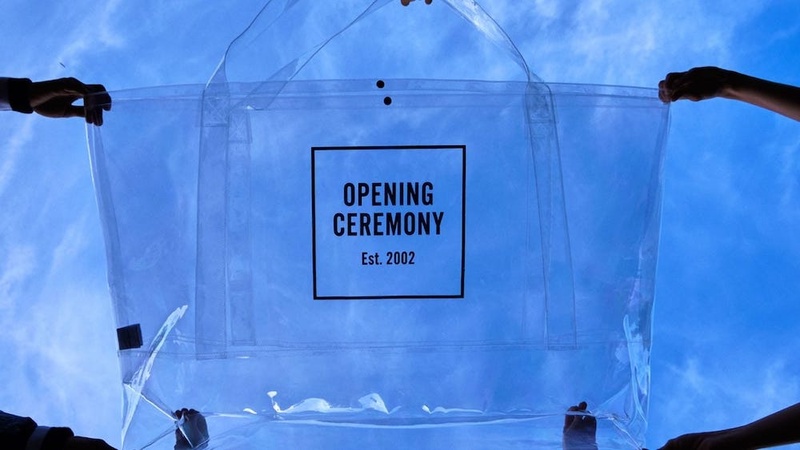
Opening Ceremony managed to encapsulate something that went beyond a particular aesthetic. It presents a certain sensibility that is hard to articulate. It’s a feeling, almost. If you say that something has a very Opening Ceremony kind of vibe to it, people know what you mean…even if you can’t precisely define it.
That is something I was thinking about when we recently decided to close the stores. I always felt really proud that you just knew when something felt like Opening Ceremony. It really was like we were able to capture a feeling. That’s a very rare thing. You can capture an aesthetic and capture a look—those are things you can copy—but it’s much harder to create a specific feeling. Opening Ceremony was really about a certain feeling, which comes from the things that you put together to create it.
Beyond the success of Opening Ceremony, you also had huge success with your time at KENZO. Creating a brand from scratch is one thing, but going into a place that already has an iconic identity and an established name—and creating something new while also being respectful of that identity—is a very tricky thing. You and Carol were really able to breathe new life into that brand.
At a certain point after our 10 year anniversary, Carol and I were feeling like we’d had enough of these conversations with CEOs and chief marketing officers at these other companies where we felt like we were being used and put by the wayside. So we were like, “Okay, if we’re going to do something, let’s go head on and really show that we could do something like this. Something big.” So we were like, “Okay, what companies could we do?” So we had a little list of companies and on the top of our list was KENZO, which seemed perfect because it hadn’t really been tapped. KENZO also had an Asian founder, which obviously felt important to us.
So we went to them and the first thing they said to us was, “Yes, timing-wise this is good because we’re planning on transforming the company. This is the time we want to do it.” The only bad thing was that they already had someone else in mind. Still, they were intrigued and wanted to hear out our ideas. They were like, “Okay, can you fly to Paris in two days and meet with us?”
We hung up the phone and immediately started to throw together this deck that showed our plan for what KENZO was going to look like. We were even crazy enough to produce this three-minute video thing that would kind of give them the feeling we had in mind. It was like we were putting together a Ted Talk—a video, a visual mood board, a whole thing. We put all this together in two days, flew out there, met with them, showed them our portfolio, showed them our deck. Halfway through the interview, these five guys in suits close our portfolio and they’re like, “Wow, I think we want to give you the job.” We were so stunned. We were like, “You haven’t even watched the video yet!”
You obviously had a very successful run with KENZO during your tenure there—and Opening Ceremony continues to have a big footprint all over the world—but I’m curious about how you make decisions. For example, how do you know when it’s time for something to end and for something new to start?
You really have to use your gut. I strongly believe that sometimes you do have to let certain things end for something new to begin. In the case of Opening Ceremony, the retail stores have closed but the brand is still very much alive, and Carol and I are still overseeing it. The company got purchased in January of this year, which is crazy to think about now because who could have known in January just how crazy this year would be, right? But we sold the company and we got to have this moment to celebrate our history and for everyone to tell their stories about Opening Ceremony and why it was important to them. I’m so thankful we got to have that moment and that we weren’t just swept up in being another one of the Covid closures that were to follow.
Carol and I talked about it a lot. Again, it was about how the feeling and sensibility of Opening Ceremony could continue beyond just fashion. The retail stores had been one of our primary vehicles, but there are other vehicles you can play with that will still add to that sensibility? Also, fashion is a really complicated industry for a lot of various reasons. The puzzle pieces involved are very intricate. What does it mean now to do runway shows? The whole system is so broken and so messed up. You’re showing collections six months before anybody can purchase the clothes, but people on social media are talking about things as if it’s happening now. And by the time it comes out in stores…is it still relevant? During the pandemic I felt excited and energized that the industry was transforming; people were signing petitions and saying we need to change how all of this works. But I honestly don’t know that things have really changed, to be quite honest.
I think in many ways everyone has fallen back into the way that the business was always run. I’m disappointed that there aren’t bigger rule-breakers out there. There are obviously exceptions and there are people that are doing cool and incredible things, but as a whole I think the big players are still playing the old games. And as a person who’s constantly looking to the future and modernizing and looking at what’s in front of me, I don’t feel like it’s transforming the way that I want it to be transforming. So I think in every way possible, I’m trying to do things differently with Opening Ceremony as much as I can. But there are big barriers. And until the big players, whether it’s luxury, brand or department stores who have the buying power, unless those people are all transforming, the industry is going to be run by the way that it’s always been run. To me, it feels like what needs to happen is that we need to start from scratch.
And now you are opening a restaurant in Los Angeles. From fashion to food—from one challenging industry to another, equally challenging industry.
Like I said, I’m still working on Opening Ceremony. I’m designing that and we’re thinking of new ways to approach that. But I’ve also launched this restaurant, Chifa, which is super exciting. I’m opening this with my family. So I’m opening with three other people. My sister, my brother in law, and my mom, Wendy. The four of us are opening this together. My mom has some restaurant experience, but most of us do not. I think because a lot of us haven’t done this before in any traditional sense, we’re looking to transform what that this experience could mean.
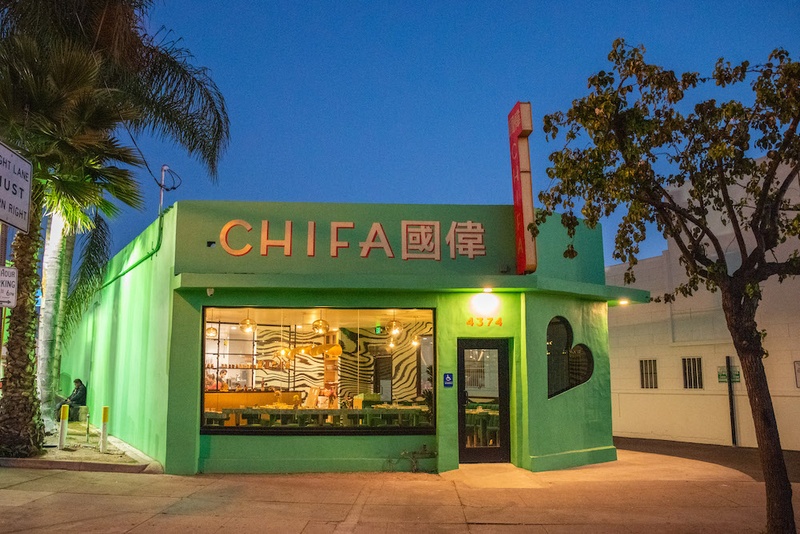
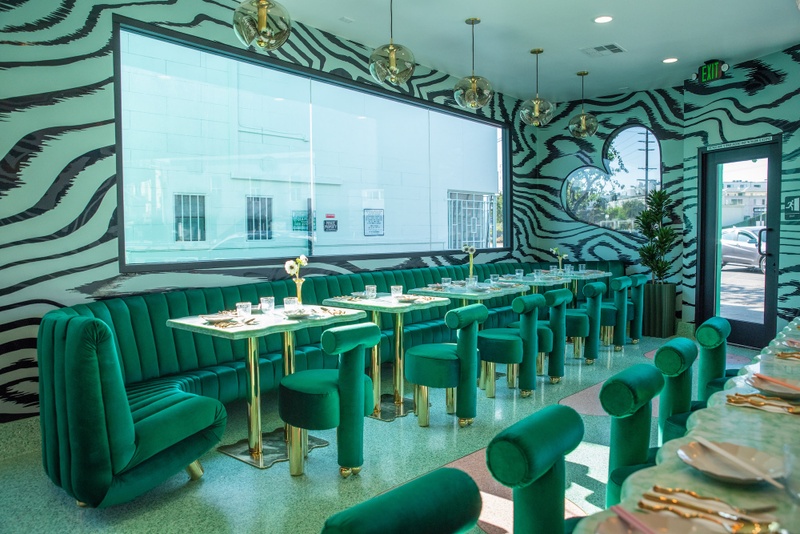
In many ways, we created a space where the core part of it is obviously the food, which is delicious and super exciting. It’s the kind of food that we’ve always eaten at home. And because I come from a multicultural background, we’re continuing that and bringing that to the public. And I feel like it’s interesting because to eat Peruvian food alongside Chinese food seems like…I don’t know, where else would you normally get that? And it’s not fusion. It’s really pure Peruvian food and pure Chinese food because that’s the culture I was raised with. We’re also bringing different things to life through collaboration, working with a lot of local artists, artisans, and chefs. So I feel like I’m bringing people together and highlighting people and their talents via this space.
I feel like I only know how to approach things a certain way, which is by doing something that feels very inclusive and diverse. For the restaurant, my sister made it a point to highlight age diversity and racial diversity, which is already within our space. We have people involved that range in age from 16 to 75, and that’s not even including my mom, that are working in the space. I think it’s important to bring attention to that.
It feels like the common denominator for all of these things is really about collaboration and allowing people to bring their own best selves to the project.
Yeah. It’s always sort of been that way. I have conversations with people and then they tell me about something they’ve been thinking about doing and then I say, “Oh, should we make that?” That’s always been my attitude and my skill set. I’m a maker and I can make things happen. I love seeing people smile and be happy. And when you can bring someone’s idea to life, that’s incredible. So a lot of it is bringing conversations to life. That has resulted in the body of work I feel the proudest of. These collaborations feel like these intimate conversations that we get to share with the public.
Fashion gets a bad rap sometimes for being perceived as empty or, often, intentionally apolitical. Your work has always felt like the opposite of that.
I feel like everything that we’ve ever done can mark a time and a place of what was happening in the world at that point. I’m always working on projects where I feel like can do that. People’s attention is often grabbed by entertainment or by food or by fashion because it’s fun and sexy, which is fine. But I think if you can use those vehicles to bring some truth to the world, that’s the perfect marriage. You have their attention. You have to make the best of it. That’s something that I personally feel like I know how to do, and I want to do. And I feel like the more I can do that, the better. My advice for people is to follow your feelings and really embrace your interests, I think that is what it comes down to. You’ve got to follow whatever the feeling is.
Humberto Leon Recommends:
Wong Kar Wei filmography
Larry Kramer - Faggots
James Baldwin - Giovanni’s Room
Mario Bellini
My mom @popowendy
- Name
- Humberto Leon
- Vocation
- Designer, entrepreneur, fledgling restaurateur
Some Things
Pagination
